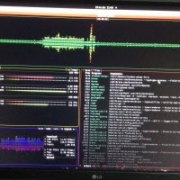

WatchGuard Threat Detection and Response and Microsoft Defender for Endpoint are both well-regarded security solutions. Microsoft Defender for Endpoint seems to possess the upper hand in features and is highly valued by users for its advanced functionalities.
Features: WatchGuard Threat Detection and Response users value its automated threat detection, ease of integration, and real-time monitoring. Microsoft Defender for Endpoint users highlight its strong integration with Microsoft 365, advanced threat detection capabilities, and seamless deployment.
Room for Improvement: WatchGuard users suggest enhancements in reporting features and a more intuitive experience. Microsoft Defender for Endpoint feedback includes desires for improved performance and reduction in occasional false positives.
Ease of Deployment and Customer Service: WatchGuard Threat Detection and Response is praised for its straightforward deployment. However, some users feel the initial setup can be complex. Customer service is generally well-received. Microsoft Defender for Endpoint is appreciated for its smooth deployment, especially in Microsoft-centric environments, but some users report challenges in initial configuration. Customer support is rated as efficient and knowledgeable.
Pricing and ROI: WatchGuard Threat Detection and Response is seen as a cost-effective solution with good ROI. Users appreciate its transparent pricing model. Microsoft Defender for Endpoint is regarded as a higher investment but justifies the cost with its extensive feature set and enterprise-level protection.
Without detection and protection measures, organizations would face substantial payments and reputational damage, including the necessity to inform customers about data breaches, potentially leading to loss of business.
We have seen a return on investment when using Microsoft Defender for Endpoint, as it saves labor by reducing the need for staff to focus on it.
The biggest return on investment for me when using Microsoft Defender for Endpoint is the time saving.
The level-one support seems disconnected from subject matter experts.
I rate Microsoft support 10 out of 10.
Due to our size, we don't have access to direct technical support, but the knowledge base, Microsoft Learn, and the articles available are really good.
We managed to scale it out in a short amount of time, with two months of planning and three months of implementation on 10,000 computers.
Microsoft Defender for Endpoint is scalable enough to handle various devices across environments, whether they are laptops, Android devices, or operating in hybrid environments.
Compatibility is its main feature.
I haven't seen any outages with Microsoft.
I rate Defender 10 out of 10 for stability.
Defender for Endpoint is extremely stable.
Repeated interactions are necessary due to Level One's lack of tools and knowledge, hindering efficient problem-solving and negatively impacting our experience with Microsoft support.
We use Microsoft partners to help govern the platform, and as part of an alliance, we want to gather data from each tenant and combine them for a complete view.
Providing more detailed information on how Microsoft Defender for Endpoint detects vulnerabilities.
Given our extensive Microsoft licensing, transitioning to Defender for Endpoint did not affect licensing costs.
It costs $15 per VM for the P2 plan, which is seen as affordable for customers.
The pricing, setup, and licensing were very easy and simple.
When we tried to renew the Palo Alto license, the cost was beyond any reasonable range.
Defender for Endpoint's coverage across different platforms in our environment is pretty good. We have devices running Linux, Mac OS, Windows, iOS, and Android. It covers all of them.
Microsoft Defender for Endpoint provides a unified management interface allowing customers to manage their on-premises and hybrid infrastructures from a single pane.
One of the best features of Microsoft Defender for Endpoint is its database for identifying zero-day attacks or malware attacks.


Microsoft Defender for Endpoint is a comprehensive security solution that provides advanced threat protection for organizations. It offers real-time protection against various types of cyber threats, including malware, viruses, ransomware, and phishing attacks.
With its powerful machine-learning capabilities, it can detect and block sophisticated attacks before they can cause any harm. The solution also includes endpoint detection and response (EDR) capabilities, allowing organizations to quickly investigate and respond to security incidents. It provides detailed insights into the attack timeline, enabling security teams to understand the scope and impact of an incident.
Microsoft Defender for Endpoint also offers proactive threat hunting, allowing organizations to proactively search for and identify potential threats within their network. It integrates seamlessly with other Microsoft security solutions, such as Microsoft Defender XDR, to provide a unified and holistic security approach. With its centralized management console, organizations can easily deploy, configure, and monitor the security solution across their entire network.
Microsoft Defender for Endpoint is a robust and scalable security solution that helps organizations protect their endpoints and data from evolving cyber threats.
Hackers are designing malware to be more sophisticated than ever. Through packing, encryption, and polymorphism, cyber criminals are able to disguise their attacks to avoid detection. Zero day threats and advanced malware easily slip by antivirus solutions that are simply too slow to respond to the constant stream of emerging threats. Organizations of all sizes need a solution that leverages a holistic approach to security from the network to the endpoint. WatchGuard Threat Detection and Response (TDR) is a powerful collection of advanced malware defense tools that correlate threat indicators from Firebox appliances and Host Sensors to stop known, unknown and evasive malware threats.
We monitor all Endpoint Detection and Response (EDR) reviews to prevent fraudulent reviews and keep review quality high. We do not post reviews by company employees or direct competitors. We validate each review for authenticity via cross-reference with LinkedIn, and personal follow-up with the reviewer when necessary.